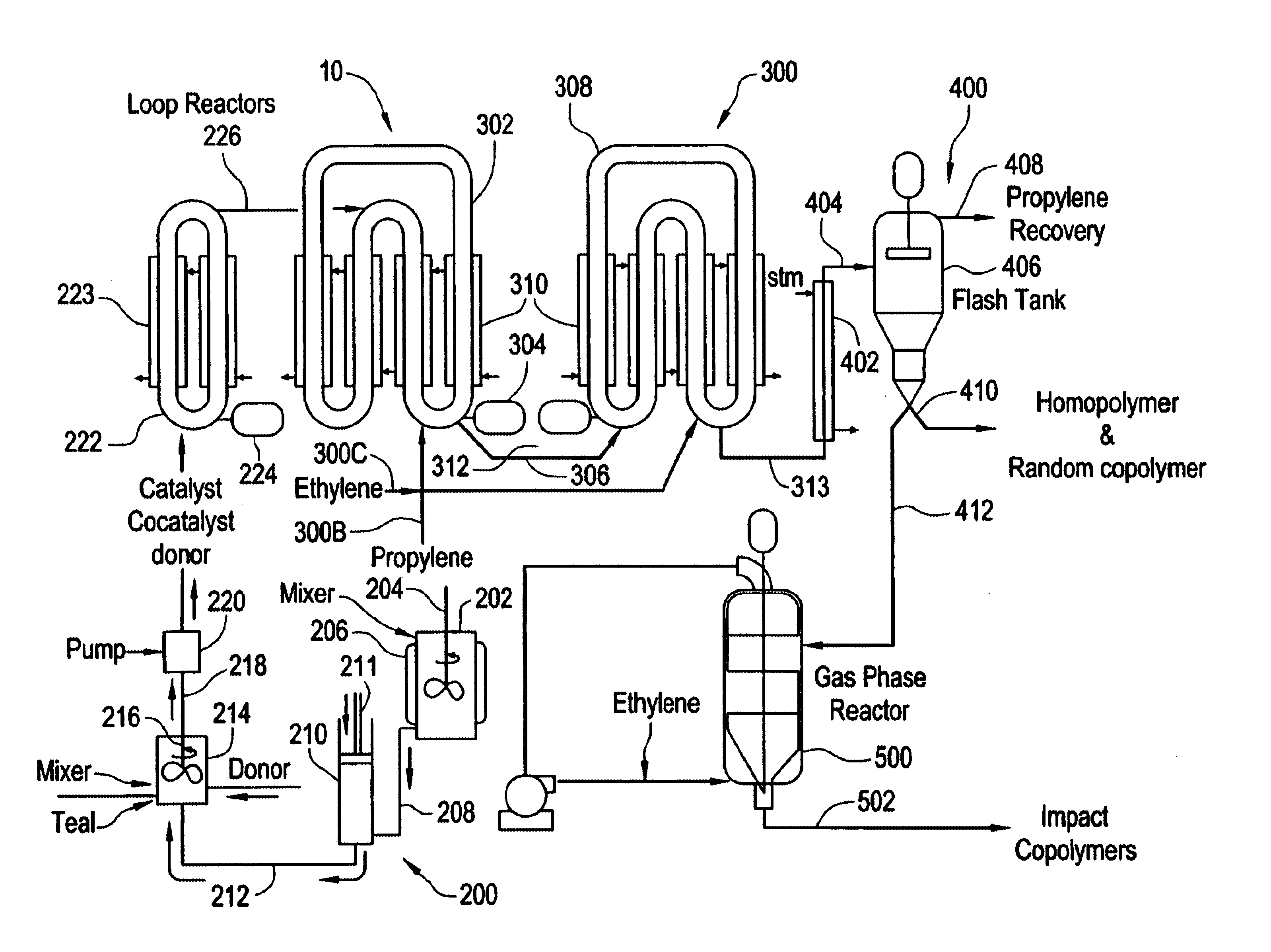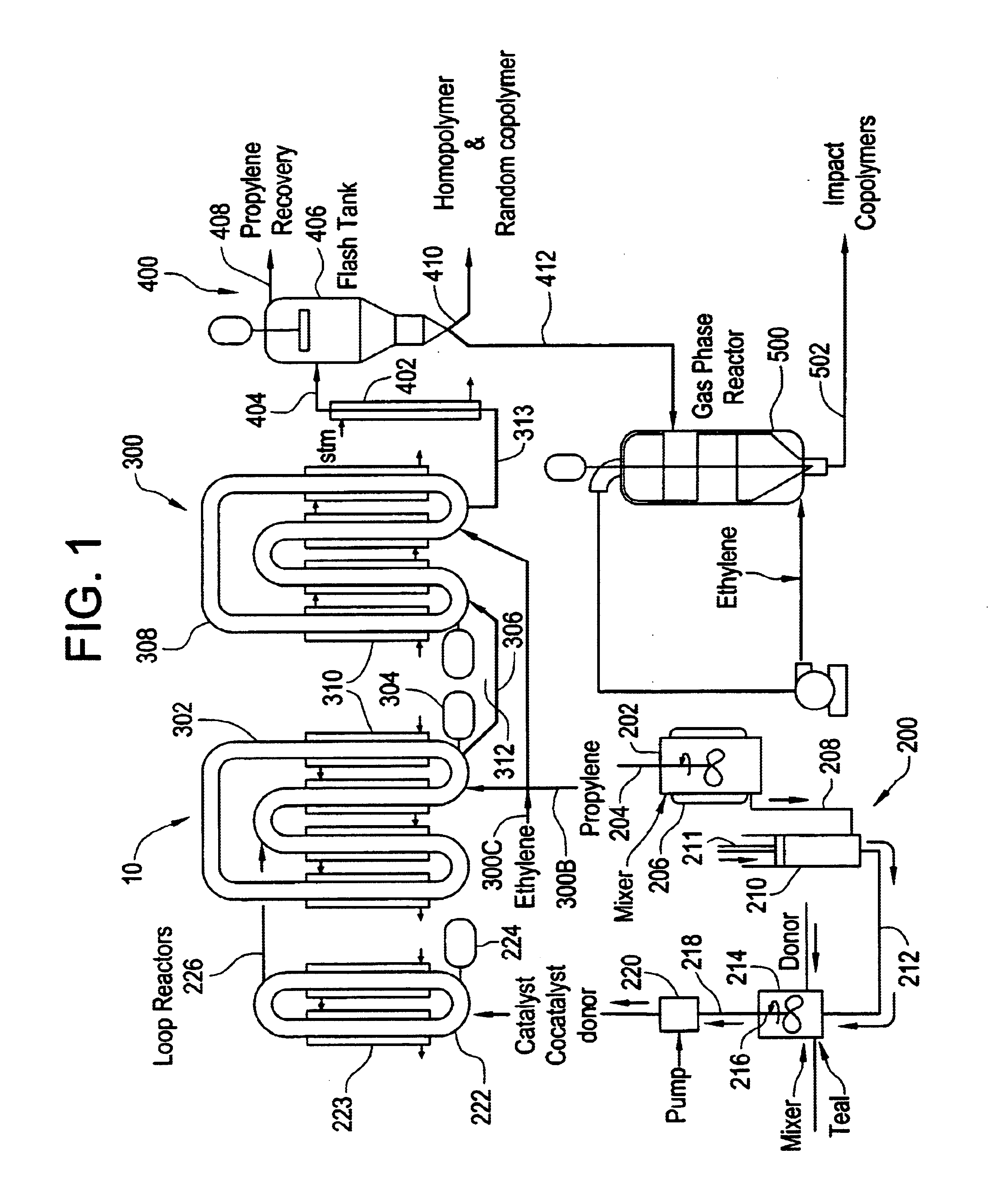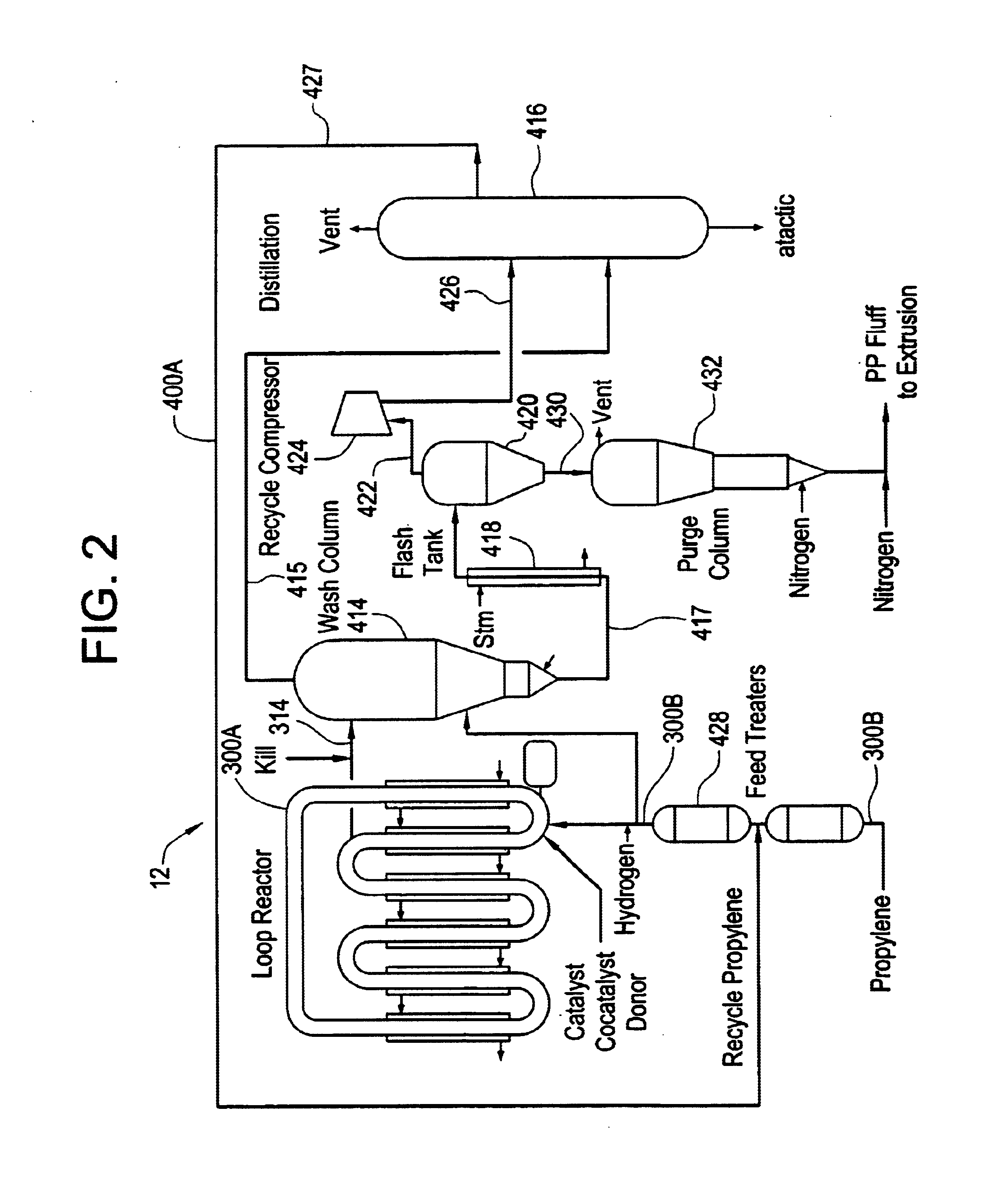Method for transitioning between Ziegler-Natta and metallocene catalysts in a bulk loop reactor for the production of polypropylene
a technology of metallocene catalyst and bulk loop reactor, which is applied in the direction of feed devices, chemical/physical/physical-chemical processes, chemical/physical/physical processes, etc., can solve the problems of not all such catalyst systems are compatible in combination with each other, the design of the catalyst system may be less than suitable or less than desirable for the production of polypropylenes using another catalyst system
- Summary
- Abstract
- Description
- Claims
- Application Information
AI Technical Summary
Benefits of technology
Problems solved by technology
Method used
Image
Examples
Embodiment Construction
Conventional Ziegler-Natta Catalysts
[0017]Traditionally, catalyst systems used in bulk loop reactors for the commercial production (polymer production in the range of between 1 and up to 5 tons / hour and desirably between at least 1 ton to at least 50 tons / hour over a period of between at least about 5 days up to at least about 2 years) of polypropylene homopolymers and / or copolymers are commonly know as conventional Ziegler-Natta catalyst systems (hereafter may also be referred to as “Ziegler-Natta catalysts” or “Ziegler-Natta catalyst systems”). Suitable conventional Ziegler-Natta catalysts are disclosed in, for example, U.S. Pat. No. 4,701,432 (in particular, see column 5 line 27 to column 6 line 5); U.S. Pat. No. 4,987,200 (in particular, see column 27 line 22 to column 28 line 17); U.S. Pat. Nos. 3,687,920; 4,086,408; 4,376,191; 5,019,633; 4,482,687; 4,101,445; 4,560,671; 4,719,193; 4,755,495; and 5,070,055, each of which is incorporated by reference herein in its entirety. Thes...
PUM
| Property | Measurement | Unit |
|---|---|---|
| temperature | aaaaa | aaaaa |
| temperature | aaaaa | aaaaa |
| surface area | aaaaa | aaaaa |
Abstract
Description
Claims
Application Information
 Login to View More
Login to View More - R&D
- Intellectual Property
- Life Sciences
- Materials
- Tech Scout
- Unparalleled Data Quality
- Higher Quality Content
- 60% Fewer Hallucinations
Browse by: Latest US Patents, China's latest patents, Technical Efficacy Thesaurus, Application Domain, Technology Topic, Popular Technical Reports.
© 2025 PatSnap. All rights reserved.Legal|Privacy policy|Modern Slavery Act Transparency Statement|Sitemap|About US| Contact US: help@patsnap.com



